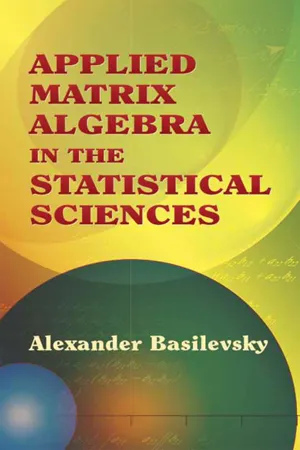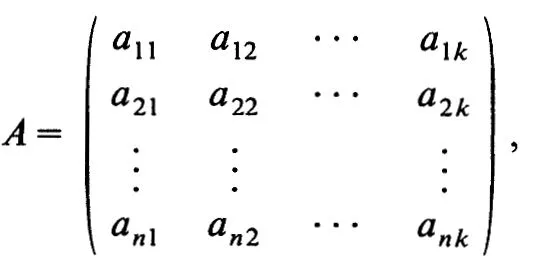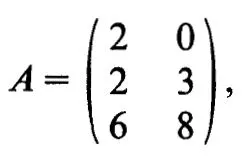
- 416 pages
- English
- ePUB (mobile friendly)
- Available on iOS & Android
Applied Matrix Algebra in the Statistical Sciences
About This Book
This comprehensive text covers both applied and theoretical branches of matrix algebra in the statistical sciences. It also provides a bridge between linear algebra and statistical models. Appropriate for advanced undergraduate and graduate students, the self-contained treatment also constitutes a handy reference for researchers. The only mathematical background necessary is a sound knowledge of high school mathematics and a first course in statistics.
Consisting of two interrelated parts, this volume begins with the basic structure of vectors and vector spaces. The latter part emphasizes the diverse properties of matrices and their associated linear transformations--and how these, in turn, depend upon results derived from linear vector spaces. An overview of introductory concepts leads to more advanced topics such as latent roots and vectors, generalized inverses, and nonnegative matrices. Each chapter concludes with a section on real-world statistical applications, plus exercises that offer concrete examples of the applications of matrix algebra.
Frequently asked questions
Information
Chapter 1
Vectors
1.1 Introduction




1.2 Vector Operations
Table of contents
- DOVER BOOKS ON MATHEMATICS
- Title Page
- Copyright Page
- Dedication
- Table of Contents
- Preface
- Chapter 1 - Vectors
- Chapter 2 - Vector Spaces
- Chapter 3 - Matrices and Systems of Linear Equations
- Chapter 4 - Matrices of Special Type
- Chapter 5 - Latent Roots and Latent Vectors
- Chapter 6 - Generalized Matrix Inverses
- Chapter 7 - Nonnegative and Diagonally Dominant Matrices
- References
- Index